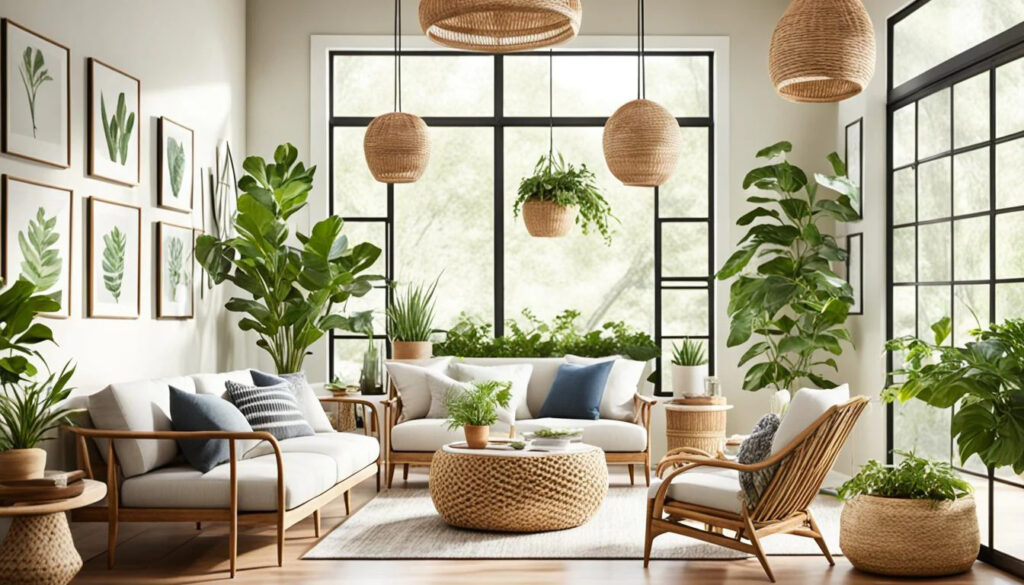Key Takeaways
- Learn how to incorporate botanical décor into your home effortlessly.
- Discover the benefits of using natural elements in interior design.
- Explore various DIY projects to enhance your living space.
- Understand the impact of botanical décor on your mental well-being.
Introduction to Botanical Décor
Home décor has seen various trends over the years, but one timeless and enchanting style is botanical-inspired design. This approach infuses spaces with elements of nature, creating a serene and aesthetically pleasing environment. Botanical décor is not just about adding plants; it includes various natural accents like floral prints, organic materials, and even botanical-themed artwork. One way to enhance this natural vibe, especially during the warm seasons, is by incorporating summer candles into your décor. These candles provide a beautiful scent and add to the overall botanical theme. Making natural elements a focal point in your home creates a welcoming and rejuvenating space.
Benefits of Incorporating Natural Elements
Incorporating natural elements into your home can raise general well-being, lessen stress, and enhance air quality. Having a touch of greenery in your living spaces can make your home more inviting and lively. By filtering out pollutants, plants may also help clean the air, which is especially advantageous for people with allergies or respiratory problems. Furthermore, plants’ soothing green hues and natural textures can contribute to a calming atmosphere in any room, promoting relaxation and a sense of tranquility.
Choosing the Right Plants for Your Space

Selecting the correct type of plants is crucial for achieving the desired aesthetic and benefits. Some popular choices include succulents, ferns, and air plants. If you’re new to plant care, opt for low-maintenance varieties like ZZ or snake plants. These plants can thrive with minimal attention, making them perfect for busy individuals or those new to plant parenting.
- ZZ Plants: These are great for low-light areas and require minimal watering. Known for their resilience, they can survive even the most forgetful plant owner.
- Fiddle Leaf Fig: This tree is perfect for large spaces and can be a statement piece. Its large, lush leaves can become a focal point that brings sophistication and beauty to every space.
- Succulents are ideal for small spaces and require minimal care. These little plants are available in various colors and forms, making them perfect for adding a bit of greenery to desks, shelves, or windowsills.
When choosing plants, consider light availability, temperature, and humidity levels in your home. For instance, succulents and cacti thrive in bright, sunny spots, while ferns prefer shaded, humid environments. By selecting plants well-suited to your home’s conditions, you’ll ensure they remain healthy and vibrant.
Creative DIY Botanical Projects
Engaging in DIY projects can be a fulfilling way to personalize your botanical décor. Consider creating a terrarium, pressed flower art, or herb garden.
Creating a terrarium, for example, can be a simple and enjoyable hobby for kids and adults alike. These miniature gardens can be customized with different types of plants, decorative stones, and even tiny figurines to create a unique landscape. Pressed flower art is another creative option that can bring a touch of nature indoors. By pressing and framing flowers, you can create beautiful, lasting artwork that captures the beauty of blossoms in their prime.
For those who enjoy cooking, a small herb garden in the kitchen can be both practical and decorative. Growing herbs like basil, rosemary, and mint provide fresh meal ingredients and add a lovely, natural fragrance to your home. Whether you create a simple terrarium or a vibrant herb garden, DIY botanical projects can add a personal and creative touch to your décor.
Styling Tips and Tricks
Styling your home with botanical elements is simple. This may be accomplished by combining different sizes and textures. For instance, a large leafy plant with miniature succulents or hanging planters can add depth and visual interest. Adding botanical prints and patterns can enhance the natural theme, while natural materials like wood, stone, and wicker can further improve the botanical feel. Layering different elements can add complexity and richness to your décor. For instance, a trailing ivy on a high shelf can create a cascading effect, while plant stands, wall-mounted planters, and hanging baskets can maximize space and create a dynamic, multi-dimensional look.
Impact on Mental Well-being
Research suggests that surrounding yourself with nature can improve mental clarity and reduce stress levels. Natural surroundings can positively affect your emotional state and cognitive function. Incorporating botanical décor into your home can create a peaceful sanctuary that promotes mental well-being.
The natural elements and the presence of plants can also foster a sense of connection to the environment, which can be particularly beneficial in cities where there might not be as much access to the outdoors. Bringing the outside within allows you to produce a soothing retreat that helps you escape the hustle and bustle of daily life.
Additionally, caring for plants can provide a sense of purpose and accomplishment. Whether tending to your indoor garden, watering, pruning, or simply enjoying your plants’ growth, it can be a rewarding and meditative experience. This connection to nature and nurturing living things can increase happiness and reduce stress.
Preserving and Maintaining Botanical Décor
Once you’ve set up your botanical space, maintaining your plants ensures they thrive. Regular watering, adequate sunlight, and occasional fertilization can keep your plants healthy. Dusting the leaves and checking for pests can also help avoid common plant problems.
Each plant species has particular maintenance needs, so it’s essential to familiarize yourself with them. For example, succulents require well-draining soil and infrequent watering, while ferns thrive in moist, humid conditions. By giving your plants the proper care, you can ensure they remain alive and healthy.
Proper placement is also crucial for plant health. Ensure your plants receive the right amount of light according to their needs. Some plants require full sunlight, while others flourish in shaded or indirect light. Regularly rotating your pots can also help your plants grow evenly and prevent them from leaning toward the light source.

